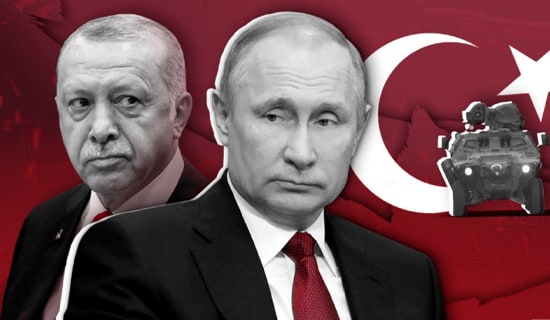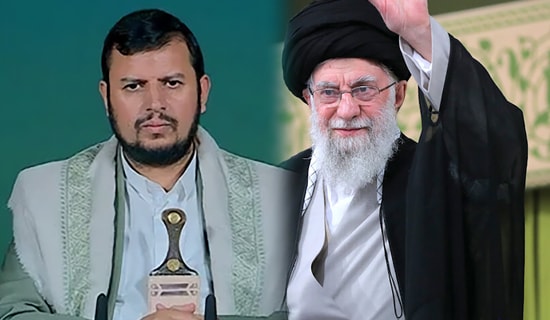In the London based Arabic daily Al-Hayat, Patrick Seale, Syrian President Assad's official biographer, published a detailed account of the Syrian-Israeli negotiations between 1993-1996 based on the original documents and correspondence between the US and Assad, that apparently were made available to him by the Syrians.
Syrian-Israeli negotiations are on hold due to the dispute between the two sides on the question of what point they should resume negotiations.
The Syrian position is that they should resume negotiations from the point established in the message that Rabin sent through US Secretary of State Warren Christopher in June 1994 - that Israel would be ready to withdraw to the 1967 border if its demands for security and normalization are met. The Syrians regard this message as a standing commitment and a "deposit."
Israel's position is that this message cannot be considered a standing commitment, because it was conditioned from the beginning on Syria’s acceptance of Israeli demands that were not met. Therefore negotiations need not resume from there.
The American position was recently made clear when senior American officials publicly disputed the Syrian claim that Rabin’s proposal is a standing commitment. The first "anonymous official" - who Seale identifies as Dennis Ross made a statement to that effect on November 3, 1999. It was reiterated by State Department Spokesman, James Rubin, who said, referring to past Israeli-Syrian exchanges: "nothing is agreed until everything is agreed."[1]
In his articles, Seale attempts to dispute the American and Israeli positions by disclosing the secret negotiations. First, Seale shows that in the negotiations there was an Israeli commitment to a full withdrawal to the 1967 border. Second, Seale responds to the American position that nothing binding was reached in the negotiations by making a distinction between a "commitment" and an "agreement." Seale clarifies that Assad does not deny that Rabin’s message was conditioned and that an agreement on the conditions had not been reached. However, he claims that the conditional element in Rabin's message does not cancel the validity of the commitment to a withdrawal to the 1967 border that must come into effect once the two parties agree on the terms Rabin had demanded.
Following is a summary of Seale's articles. Part I presents the series of meetings between Secretary Christopher and President Assad between August 1993 and June 1994, which led to the creation of the "deposit." Part II focuses on the following negotiations over the security arrangements, in which the "deposit" and the future Israeli border were central.
Part I: Creation of Rabin's "Deposit"
According to Seale, Israel's position developed between August 1993 and June 1994 from a vague formula of "full withdrawal" to a specific commitment to a "withdrawal to the June 4, 1967 border."
August 1993 Christopher-Assad Meeting
On August 4, 1993, writes Seale, Secretary Christopher came to Damascus and, "according to both Syrian and American sources," told Assad that Rabin had asked him to deliver the message that "Israel is ready for a full withdrawal from the Golan on the condition that its demands in the areas of security and normalization would be met."[2] Seale stresses that Rabin insisted his message be completely confidential to avoid domestic Israeli criticism. Rabin did not share this secret with anyone in his administration, except for the head of the Israeli negotiating team, Prof. Itamar Rabinovich.[3]
In return for the withdrawal and as a condition to the completion of the deal, Rabin demanded security arrangements with American participation, and a peace treaty with full normalization, including the establishment of diplomatic relations. Rabin demanded a 5 year period for a gradual withdrawal, and a limited first phase of withdrawal in which no settlements would be evacuated. Also, the entire deal would be presented to a referendum in Israel. Rabin wanted to know if Syria was ready to take severe action against Hizbullah in Lebanon, to expel the ten Palestinian organizations that oppose the peace process from Damascus, and to sever its strategic ties with Iran. [4]
"Full withdrawal" is a vague term since Israel and Syria disagree on the future border. Syria demands an Israeli withdrawal to the 1967 border – which allows Syria a direct access to the Sea of Galilee. Israel claims that the relevant border for a settlement is the international border that was set in 1923.
Thus, Assad rejected the vague formula Rabin offered and asked Christopher two questions. "When Rabin talks of full withdrawal does he mean a withdrawal to the posts Israel held on June 4, 1967?" Christopher replied: "I have a commitment to a full withdrawal without a specific determination." "Does Israel have further claims to any lands it occupied on the Syrian front in June 1967?" Christopher replied: "not as far as I know." [5]
Christopher's answers did not satisfy Assad who demanded a specific commitment to a withdrawal to the ’67 borderline. Seale claims that Assad did not entirely reject them Rabin's conditions for the withdrawal, but rather asked to negotiate them. He rejected the proposal to establish diplomatic relationship, but accepted the basic equation of "full withdrawal in return for full peace." Assad also agreed to an international participation in the security arrangements. Regarding the implementation timetable, the Syrian President offered 6 months instead of 5 years. Rabin, however, saw Assad's answers as a complete rejection of his proposal.[6]
May 1994 Christopher-Assad Meeting
Following shuttle missions by Christopher and Dennis Ross in April-May 1994, Rabin, through Christopher, sent Assad another, similar, proposal. Assad, then, asked Christopher the same two questions of clarification. Christopher admitted for the second time that he did not know which border Rabin referred to but added this time that "he thinks Rabin means the 1923 international border." The Syrian President rejected this position stating that as far as he was concerned this border was no more than "a line drawn by Imperialism on the Arab map" and that independent Syria did not participate in its drawing. Seale adds that Assad told Christopher that there would be no peace process between Israel and Syria before Rabin commits Israel to a withdrawal to the 1967 border.[7]
June 1994 Christopher-Assad Meeting
Rabin delivered the clarification Assad demanded as a precondition to negotiations, a month later, after Christopher made another shuttle mission between Jerusalem and Damascus. In this meeting, Christopher told Assad that "Rabin made a commitment to withdraw to the June 4 1967 border, on the condition that his demands in the peace deal are met." Clinton even assured Assad, who was worried that it was an Israeli trick, that Rabin's commitment was genuine.[8]
The Syrian Spin on the 1993-1996 Negotiations Part II: Negotiations on the Security Arrangements
[1] Al-Hayat (London), November 21, 1999. Seale attributes the first "anonymous" statement of November 3, 1999 to Dennis Ross.
[2] Al-Hayat (London), November 21, 1999.
[3] Al-Hayat (London), November 21, 1999.
[4] Al-Hayat (London), November 21, 1999.
[5] Al-Hayat (London), November 22, 1999.
[6] Al-Hayat (London), November 21, 1999. Secretary Christopher testified on Assad's readiness to accept Rabin's proposals in an interview with Ha'aretz (Israel), October 24, 1997 by saying, "the Syrians moved like glaciers."
[7] Al-Hayat (London), November 21, 1999.
[8] Al-Hayat (London), November 22, 1999. The content of the June 1994 dialogue between Christopher and Assad was made public in September 1999 by the Syrian delegate to the UN, Micaheel Wahba, when he answered a statement by the Israeli delegate, Dore Gold, that the Israeli government never committed itself to a withdrawal to the 1967 border and that negotiations between Israel and Syria should take place only on the basis of UN Security Council Resolution 242. Wahba stated that Assad presented Christopher with his two questions. "Does Rabin mean the withdrawal will include all the land that was under Syrian sovereignty in June 4, 1967?" Christopher answered: "Yes." "Is there any Israeli claim for its right to any land included in the June 4, 1967 border?" Christopher answered: "There is no such claim." Tishreen (Syria) October 3, 1999.





